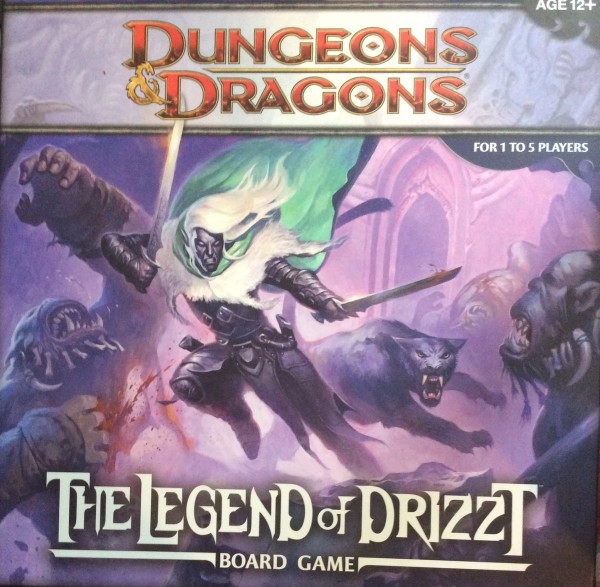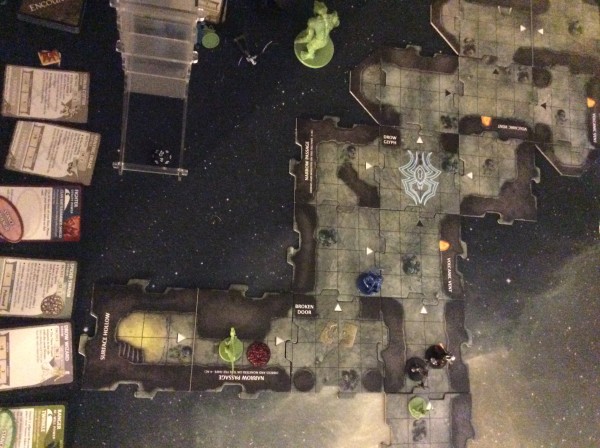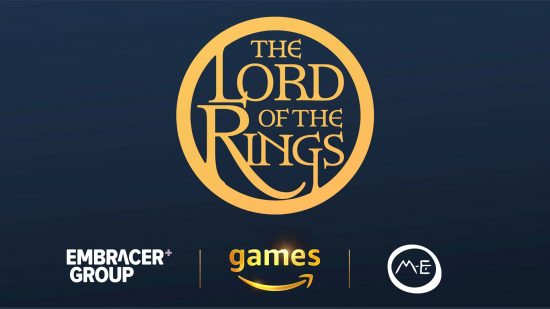A Look at The Legend of Drizzt Board Game

In this game, you follow the story of Drizzt and his companions. This series is inspired by a series of books written by R.A. Salvatore. While I have heard of Drizzt, I have never read any of the books (something that I will have to rectify in the near future). As this game is based on a set of stories, the adventures here are more thematic than those in other games in this series.
Contents
58 Cavern tiles
- 1 starting tile (double sized)
- 3 destination tiles (double sized)
- 32 dungeon tiles
- 22 cavern edge tiles
200 cards (note that early adventures use only the first 100 cards)
- 30 Monster cards (26 monster cards, 2 stalagmite cards, 2 hunting party cards)
- 80 Power cards (10 for each character, generally by class)
- 7 Ally cards
- 36 Treasure cards
- 5 Sequence of Plays cards
- 42 Encounter cards
8 hero cards and figures
4 villain cards (double-sided)
Many counters
Heroes
This set includes eight heroes, all taken from the Drizzt stories. Two of these heroes (Artemis and Jarlaxle) can also act as villains.
- Artemis Entreri (Human Assassin) – More control in where monsters are placed
- Athrogate (Dwarf Battlerager) – Knocks back opponents he hits
- Bruenor Battlehammer (Dwarf Fighter) – Can headbutt an opponent (both take 1 damage)
- Cattie-Brie (Human Archer) – Can move two squares at end of exploration phase
- Drizzt (Drow Ranger) – The title character; Gets an extra attack each turn
- Jarlaxle Baenre (Drow Mercenary) – Starts the game with an additional item card
- Regis (Halfling Rogue) – When drawing a monster card during the Exploration phase, he draws two monster cards and chooses one
- Wulfgar (Human Barbarian) – Deals +1 damage when low on hit points
Villains
There are seven villains that you can face in this game. Two of these villains are used as heroes in some adventures during competitive adventures.
- Artemis Entreri (Human Assassin) – At least here you know which side he is on
- Errtu (Balor) – The main boss in this game is a demon
- Jarlaxle Baenre (Drow Mercenary) – He likes to summon other monsters
- Methil El-Viddenvelp (Mind Flayer) – A Mind Flayer is inevitable in the Underdark
- Shimmergloom (Shadow Dragon) – The obligatory dragon
- Yochlol (Handmaiden of Lolth) – She has two stages
- Yvonnel Baenre (Matron Mother) – Hard to trap as she likes to teleport
Monsters
The monsters here tend to be those you would find in the Underdark. This game includes only 26 actual monsters with two cards indicating there there are no monster and two more cards representing a hunting party (i.e., you draw two monster cards).
Unique Mechanics
The Legend of Drizzt introduces three significant mechanics to the system:
Cavern Edges
This set includes cavern edge tiles that close off some of the unexplored edges on the map.
Pre-built Dungeons
Some adventures start with an area that is built during setup rather than during the course of the adventure. No new cavern tiles are drawn during such adventures. All of the unexplored edges are closed with cavern edge tiles prior to the start of play.
Team/Competitive Play
Some of the adventures are designed for competitive/team play. As a result of this, some of the heroes included in this set are used as villains in other adventure.
Adventures
There are 13 adventures in the Adventure Book that comes with the game. These adventures follow the exploits of the main characters of a series of stories, so the storyline for the adventures in this game is stronger than in the first two games. Many of these adventures include a list of recommended heroes.
- Exile – This is the introductory solo expedition, where you need to escape the Underdark. In this adventure, finding the exit isn’t enough, as you will then have to get past three enemies before you can get out of the caverns.
- Search for Mithral Hall – This seems a rather straightforward search and recovery operation – at least until the assassin arrives to spoil the party.
- The Hunt for Shimmergloom – Now we must escape before the dragon arrives. Alas, the dragon decided the exit space would be a good place to rest.
- Legacy of the Drow – This adventure features a random boss that is only revealed when you reach the final room. The final room in this adventure is generated in a manner similar to that used for chambers in Wrath of Ashardalon.
- Betrayal in the Tunnels – This is a cooperative adventure…until the traitor is revealed. In this case, no one knows who the traitor is until deep in the adventure (though you will likely learn who it is not as you explore).
- Starless Night – This is a team adventure, where each team is attempting to escape alive. While the two sides have a truce that keeps them from attacking each other directly, that doesn’t prevent you from arranging for a monster to attack a hero from the other team. Artemis is alone but his ability to place monsters at any unexplored edge balances this.
- Siege of Darkness – This adventure introduces the pre-generated map rules. This one works quite well when you have limited table space.
- Passage to Dawn – Here you need to free a friend from the clutches of a demon.
- The Great Trophy Hunt – This is a free-for-all competitive adventure. The object is to get bragging rights for making the most kills. As such, each hero has their own healing surge rather than the group having a common pool. You can convert this into a solo adventure and try to beat your earlier scores.
- Escape from Neverneath – You need to escape before all the exits are blocked. There are no encounters before you find the objective room unless you consider closing off an unexplored edge an encounter.
- Race for Gauntlgrym – Two teams are attempting to find and gain control of a particular location. This adventure uses two tile stacks (one for each team) that each includes the objective tile (with the first one revealed being treated as the true objective tile).
- The Deeps – This is a survival scenario. The object is to last as long as possible without getting killed. Your survival time is measured in the number of tiles you explore during the course of the adventure. While this adventure can be easily ported to the other games in this series, only tiles placed through exploration should count for victory – either remove all monsters/events that draw from the bottom of the stack or find some means to keep track of them so that those tiles would be excluded from the count.
- The Primordial Awakes! – In the final adventure, the heroes attempt to stop a primordial from waking and destroying Neverwinter. Can you defeat the elementals and bring their essence to the ceremony room? Oh yes, there is naturally a demon trying to stop you.
Conclusions
This game has a wider variety of adventure setups than the previous two games in this series. This is even if you ignore the competitive and team adventures.
An interesting feature of this set is that they split the deck into a starter deck and advanced deck. This means that you have an opportunity to learn the game before you face some of the tougher encounters.
I have heard some complaints about the hero power curve. Many feel that the extra attack by Drizzt is too powerful. This is somewhat balanced by his relatively weak at-will attacks (and he gets no option in selecting at-will attacks). That said, I can see their point when you consider that my win record is much better with this game than with the previous two games.
The greatest con is that there are a few typos on the cards. Bruenor says to gain a new Daily when he levels (just like any other character) but he doesn’t have any daily cards. The designer states that you should add three Power Attack tokens to his Power Attack card instead (I recommend adding a utility if you don’t have Power Attack in play).
The other major typo related to Regis, where the card says his ability is used during the Villain Phase while it should instead be used during the Exploration Phase (this is clarified by a post from the designer).
Overall, this is an excellent addition to the series. Now, though, I am looking forward to the expected fourth game in the series: The Temple of Elemental Evil.
Pineleaf Needles
Discover more from DDO Players
Subscribe to get the latest posts sent to your email.







Leave a Comment